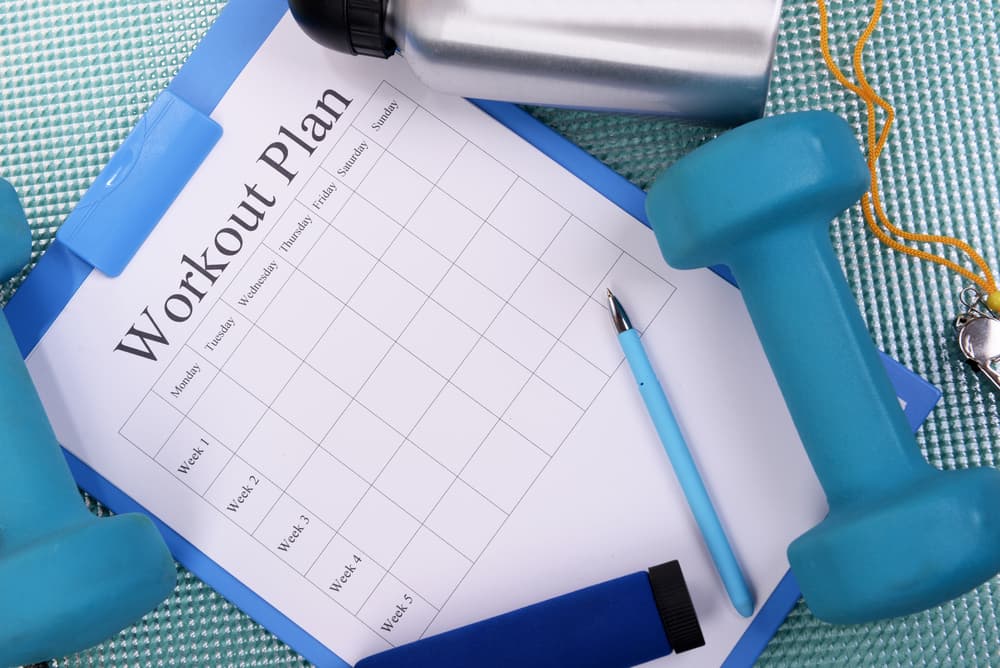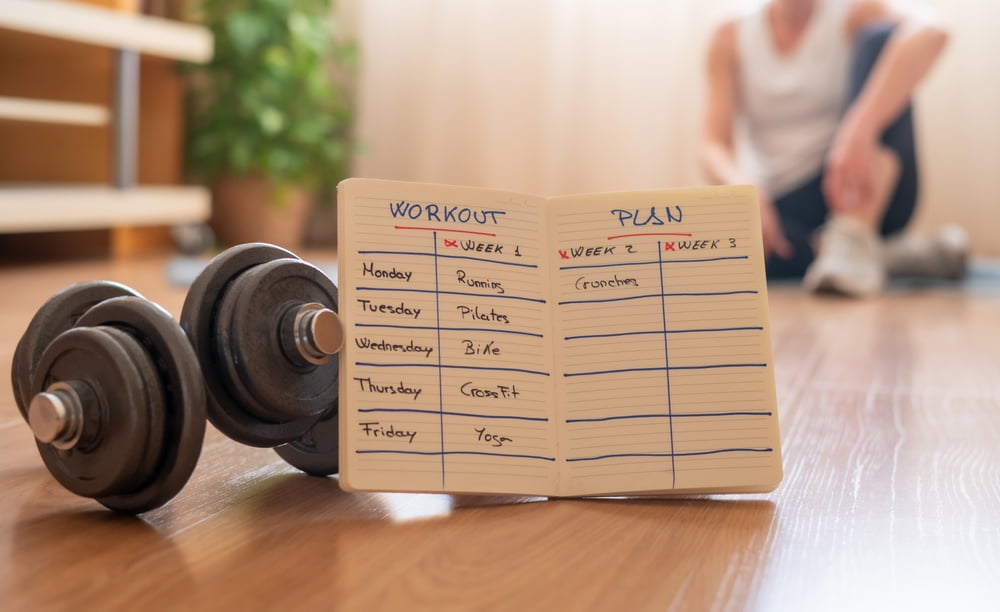How to create a progressive overload workout plan


Introduction – Why Progressive Overload Is the Key to Real Results
If you’re training consistently but not seeing noticeable strength gains or muscle development, chances are you’re missing one critical principle: progressive overload.
Progressive overload is the structured and intentional increase of physical stress on the body over time, forcing it to adapt and grow stronger. This method is backed by decades of sports science and is the cornerstone of sustainable fitness progress, whether your goal is to build muscle, burn fat, or increase endurance.
💬 As explained by the American Council on Exercise (ACE):
"Without progressive overload, the body has no reason to grow stronger or more efficient, which is why many people plateau in their results."
Think of it like this: lifting the same weight, for the same reps, for weeks on end is like reading the same book over and over—you stop learning.
✅ Benefits of Progressive Overload:
Increases strength, muscle size, and power
Enhances joint, bone, and connective tissue health
Breaks through training plateaus
Builds workout confidence and consistency
Prevents boredom and burnout
And the best part? You don’t have to increase weight every time. There are multiple smart ways to apply progressive overload—without risking injury or overtraining.
Know Your Starting Point – Assess Before You Progress


Before you can progressively overload your workouts, you need to know where you’re starting from. Just like a GPS needs your current location to map the route, your body needs a clear baseline to track growth and avoid injury.
This step is often skipped, but it’s crucial for creating a personalized, safe, and effective progressive overload plan.
🧠 Here’s How to Assess Your Baseline:
Strength Level:
Test major lifts (like push-ups, squats, or rows).
Example: How many push-ups can you do in one go? What’s your 5-rep max dumbbell press?Mobility & Form Check:
Can you do a bodyweight squat with full depth and balance?
Poor mobility limits your ability to safely increase load.Endurance/Capacity:
Try a 5-minute AMRAP (as many reps as possible) of an exercise like lunges or burpees.Recovery Rate:
Track how sore or fatigued you feel after a workout—this helps determine how aggressively you can scale.
📖 According to the National Academy of Sports Medicine (NASM):
“Individualized overload must be based on current performance level and recovery ability to reduce injury risk and promote adaptation.”
📝 Pro Tip:
Use a simple workout tracker or fitness journal (digital or notebook) to record:
Reps
Sets
Weights
Rest time
Notes on difficulty or soreness
This data becomes your personal feedback loop vital for adjusting intensity as you grow stronger.
Choose the Right Variables to Overload
![]()
![]()
Progressive overload doesn’t mean you always have to lift heavier weights. In fact, there are multiple scientifically proven ways to increase the intensity of your workout—without risking injury or losing motivation.
The key is understanding which training variables you can tweak based on your goals and recovery capacity.
🔄 Main Variables for Progressive Overload:
Weight/Resistance (Load):
The most common method—add more weight when you can complete your reps with good form.
👉 Example: Move from 20 lbs dumbbells to 25 lbs over a few weeks.Volume (Sets x Reps):
Increasing the total work done per muscle group.
👉 Example: Progress from 3 sets of 10 to 4 sets of 10.Frequency (Sessions per Week):
Add an extra training day for a specific muscle group.
👉 Example: Train chest 2x/week instead of once.Tempo (Speed of Movement):
Slow down the eccentric phase (lowering part of the movement) for added time under tension.
👉 Example: 3 seconds down, 1 second up on push-ups.Rest Periods:
Reduce rest time between sets to increase cardiovascular demand and challenge muscular endurance.
👉 Example: Move from 90s rest to 60s rest.
📚 A study in the Journal of Strength and Conditioning Research confirms that varied overload through multiple training variables leads to greater long-term muscle and strength gains compared to only increasing weight.
💡 Pro Tip:
Change only one variable at a time, so your body can adapt without being overwhelmed. Track what you change and how your body responds.
Apply the “2-for-2 Rule” to Know When to Progress
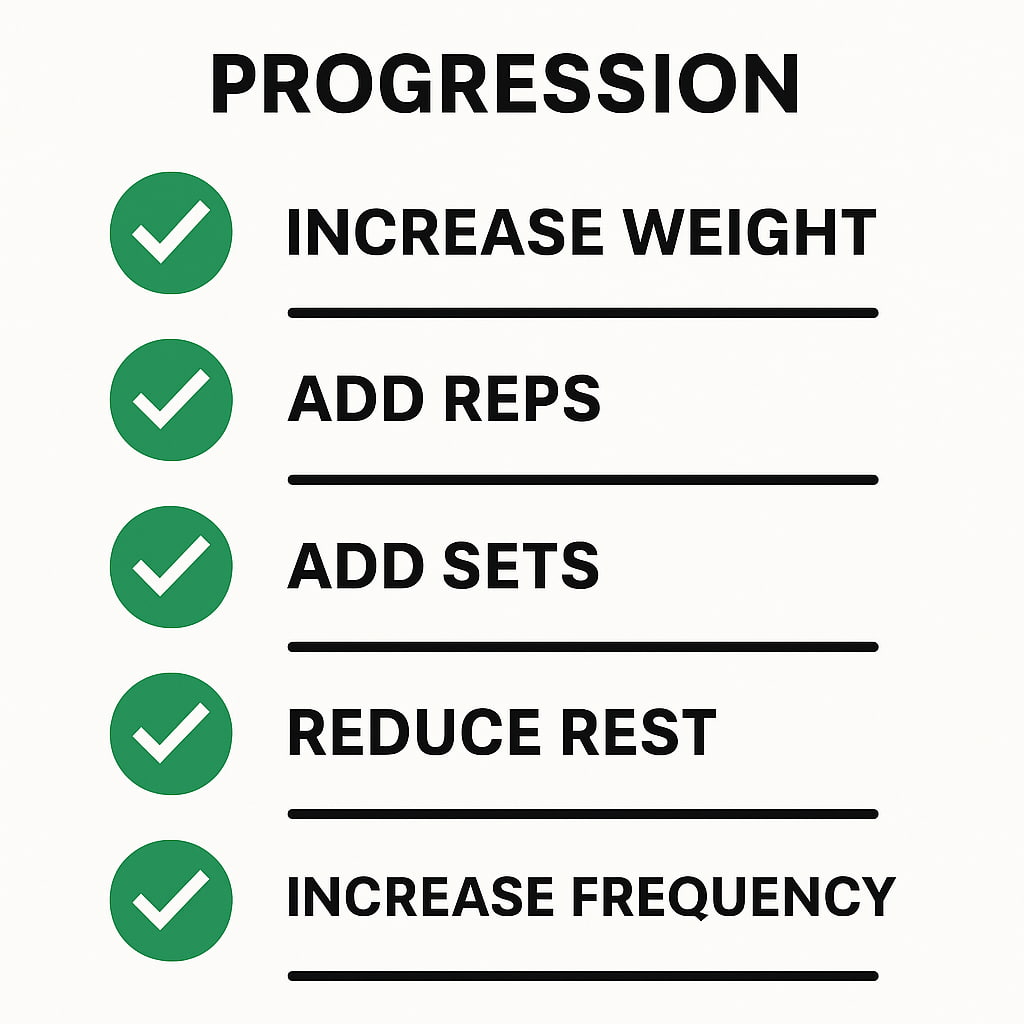

Knowing when to increase the challenge in your workout is just as important as how to do it. Progress too soon and risk injury. Progress too late and you waste time.
That’s where the simple yet powerful “2-for-2 Rule” comes in. It’s a tried-and-true guideline used by trainers and athletes to determine the right time to increase load or intensity.
🧮 What Is the 2-for-2 Rule?
👉 If you can complete 2 more reps than your target goal in the last set of an exercise for 2 consecutive sessions, it’s time to progress.
🧘♂️ Example:
Let’s say your plan is 3 sets of 10 dumbbell shoulder presses.
Week 1: You hit 10, 10, and 12 reps.
Week 2: You hit 10, 10, and 12 reps again.
✅ That’s 2 extra reps for 2 sessions → time to increase the weight!
📖 According to Strength Training: National Strength and Conditioning Association Guide,
“The 2-for-2 rule helps ensure progressive overload while minimizing injury risk. It’s especially effective for beginners and intermediates.”
💡 Why It Works:
Encourages patience and consistency
Prevents ego lifting
Aligns perfectly with sustainable strength development
📝 Pro Tip:
Use a workout tracking app or journal to note when you cross the “2-for-2” threshold. It takes the guesswork out of progression.
Use a Weekly Progression Plan – Structure Drives Success
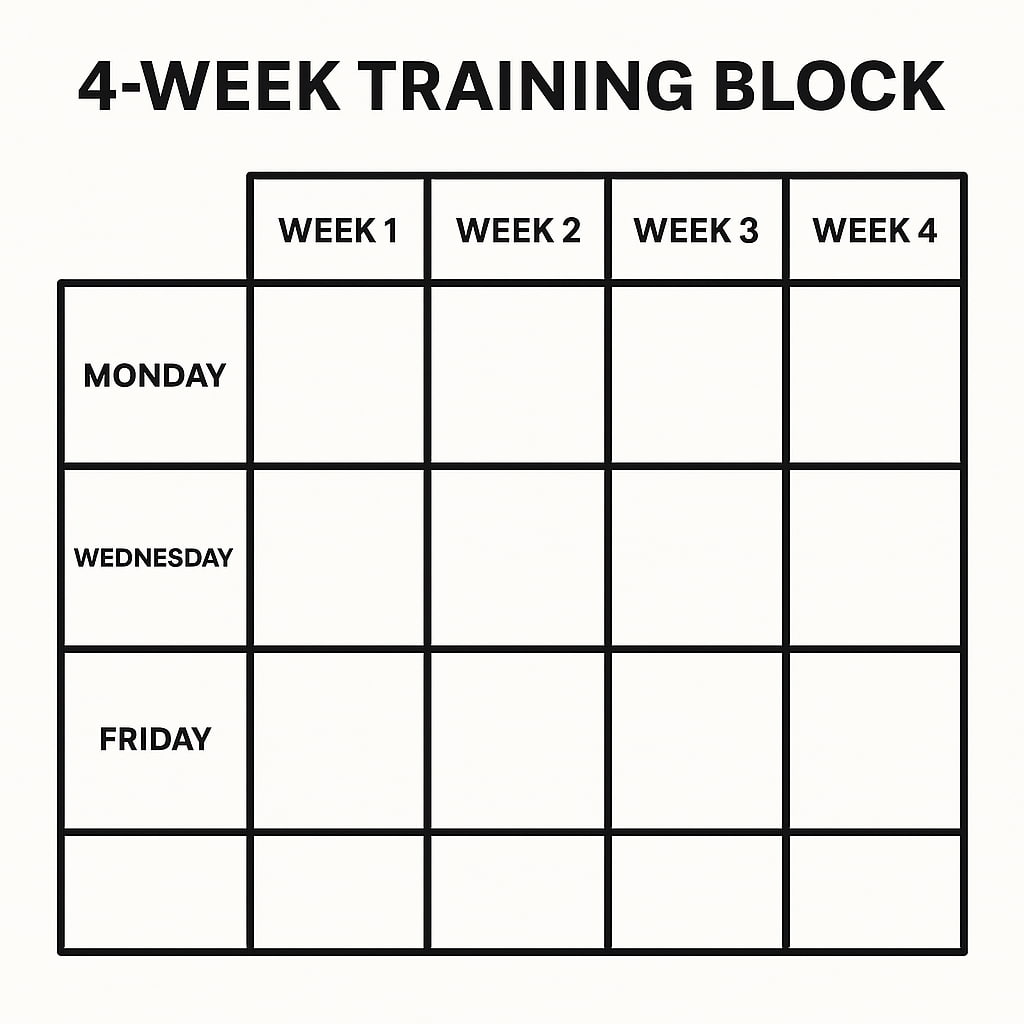

Random workouts produce random results. To apply progressive overload effectively, you need a clear, weekly plan that outlines how and when to adjust your intensity, volume, or frequency.
By structuring your workouts in weekly progressions, you ensure consistent challenge while avoiding burnout or plateau.
📆 Basic Weekly Progression Template (4-Week Block Example):
| Week | Load/Volume Focus | Goal |
|---|---|---|
| 1 | Baseline (comfortable weight & reps) | Assess movement & recoverability |
| 2 | +5% more volume or reps | Adaptation begins |
| 3 | +5–10% weight or reduced rest | Max stimulus week |
| 4 | Deload (reduce weight by 20–30%) | Recovery & reset |
🧠 Why Weekly Progression Works:
Creates measurable structure (vs. guesswork)
Reduces risk of overtraining
Helps plan for deload weeks (essential for long-term recovery)
Keeps you motivated through small, weekly wins
📖 In a 2022 review by the Journal of Applied Physiology, it was shown that structured overload with periodic deloading resulted in greater long-term strength gains and fewer injuries compared to unstructured routines.
📝 Pro Tip:
Every 4–6 weeks, reassess your maxes or volume tolerance, and adjust your next cycle. Think of it like leveling up in a game but based on data, not emotion.
Track Everything – Data is Your Training GPS
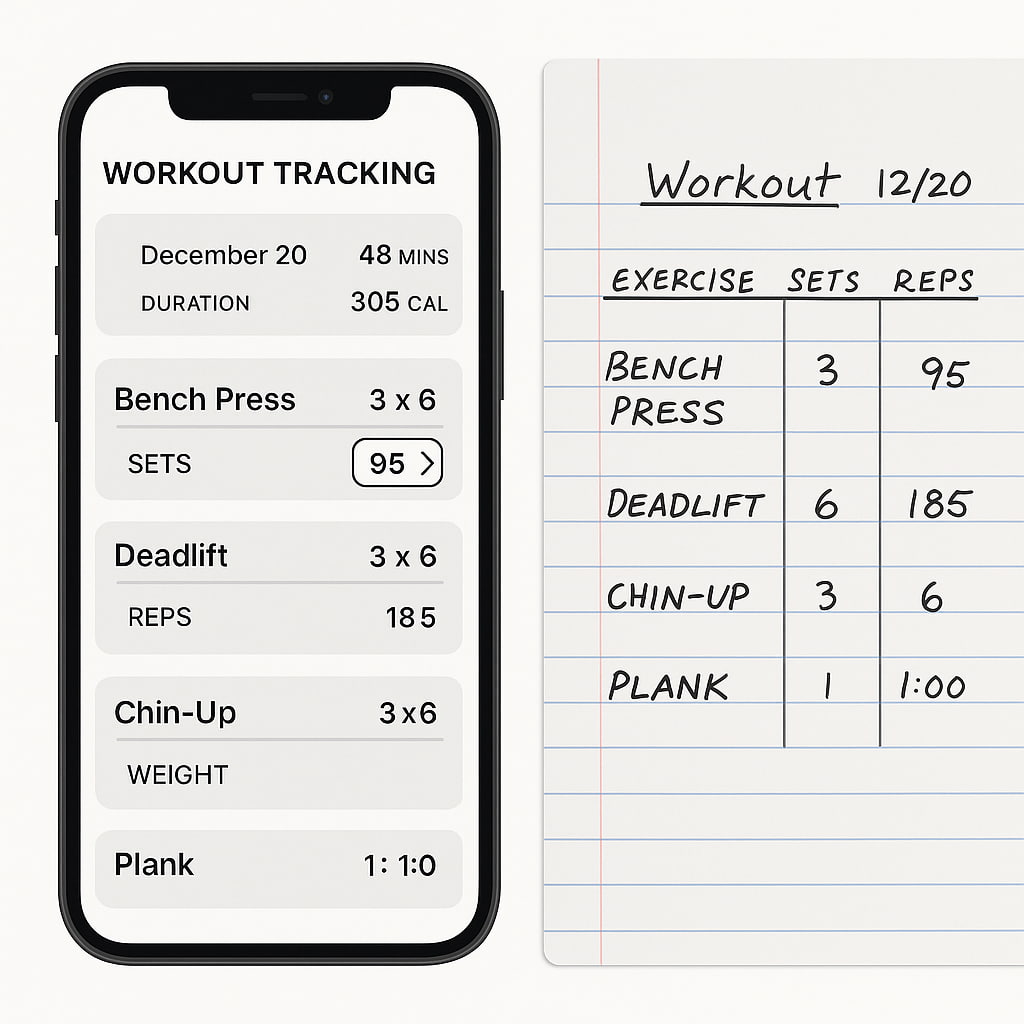

If you’re not tracking your workouts, you’re not truly training you’re just exercising. Progressive overload is built on measurement, and measurement requires tracking.
By keeping records of your weights, reps, sets, rest times, RPE (Rate of Perceived Exertion), and even mood or soreness, you gain the insights needed to make smart, evidence-based adjustments to your plan.
📝 What to Track Weekly:
| Metric | Why It Matters |
|---|---|
| Weight lifted | To gauge strength gains |
| Reps & sets completed | To monitor volume and consistency |
| Rest time between sets | Impacts intensity & progression |
| RPE (1–10 scale) | Helps manage fatigue and prevent burnout |
| Notes (pain, energy) | Subjective insights for smarter programming |
📲 Tools You Can Use:
Free apps: Strong, FitNotes, Jefit
Spreadsheets: Custom Google Sheets or Excel templates
Notebooks: Old-school but effective if you’re consistent
CoreWellFit printable tracker
💡 As noted in a study from the Journal of Human Kinetics, "Self-monitoring and performance tracking significantly enhance training adherence and outcome predictability in resistance programs."
💬 Pro Tip:
Review your progress every Sunday. Ask:
What improved?
What plateaued?
Where do I need to adjust?
This 5-minute habit will change your entire fitness game.
Prioritize Recovery to Maximize Overload Benefits


Progressive overload only works if your body has time to recover, adapt, and rebuild. Too many people focus solely on training harder while ignoring the rest, sleep, and nutrition that allow muscles to grow stronger.
Think of recovery as your secret weapon. Without it, even the most optimized workout plan will eventually lead to plateaus or burnout.
🧠 Key Recovery Strategies:
Sleep (7–9 Hours Nightly):
Muscle repair, hormone regulation (testosterone, growth hormone), and CNS recovery all happen during deep sleep.Nutrition:
Prioritize protein (1.6–2.2g/kg of bodyweight)
Eat enough carbs to fuel workouts
Include healthy fats for joint & hormone health
Stay hydrated
Rest Days:
Include at least 1–2 full rest days per week or active recovery days (light walking, yoga, foam rolling).Deload Weeks (Every 4–6 Weeks):
Reduce intensity/volume to allow supercompensation (where gains happen).
📚 According to a research review in Sports Medicine, “Recovery is essential for adaptive responses to progressive overload. Lack of recovery impairs muscle growth and increases injury risk.”
💬 Recovery ≠ Laziness
Rest is not weakness—it’s preparation.
Skipping recovery is like never rebooting your phone eventually, it crashes.
Final Thoughts – Building a Smart, Sustainable Progressive Overload Plan


Progressive overload isn’t just for bodybuilders or elite athletes it’s a proven method that anyone can follow to get stronger, leaner, and more resilient. The key is consistency, structure, and self-awareness.
By increasing the challenge just slightly over time, while focusing on proper form, tracking progress, and prioritizing recovery you set yourself up for long-term success without burnout.
📋 Sample Weekly Progressive Overload Workout Plan (Upper Body Focus)
| Day | Workout Focus | Progression Variable |
|---|---|---|
| Monday | Push Day (Chest/Triceps) | Add 5% weight or 1–2 reps |
| Wednesday | Pull Day (Back/Biceps) | Increase volume or tempo |
| Friday | Full Body + Core | Reduce rest by 15 sec |
| Sunday | Active Recovery (Mobility, Walk, Yoga) | Restore & reset |
🧠 Recap of Core Principles:
✅ Start with an assessment
✅ Adjust one variable at a time
✅ Follow the 2-for-2 rule
✅ Use a structured weekly plan
✅ Track everything with intent
✅ Prioritize rest and deloads
💬 “Progress doesn’t happen by accident. It happens by design.”
Your fitness isn’t just physical—it’s strategic.
🔗 Ready to Level Up?
Check out our CoreWellFit Training Journal and downloadable trackers to help you build your personal progressive overload plan—safely and smartly.


